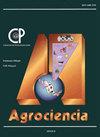墨西哥中部标准化降水指数预测的人工神经网络模型
IF 0.5
4区 农林科学
Q4 AGRICULTURE, MULTIDISCIPLINARY
引用次数: 1
摘要
气候变化的一些影响可能与降雨强度或降雨稀缺模式的变化有关。因此,由于干旱发生的增加,人类正面临着环境挑战。根据降雨的累积影响来预测干旱,对于减轻对农业等水敏感部门的不利后果可能大有裨益。然后,干旱指数的预测模型可以帮助评估缺水情况,识别干旱及其严重程度特征。利用1965 - 2004年预测变量数据和2005-2014年模拟数据,验证了人工神经网络作为数据驱动模型预测青海中北部4个地区(半沙漠、高原、峡谷和山地)月标准化降水指数的可行性。采用双曲正切作为激活函数,自适应矩估计(Adam)算法作为优化方法,找到了最优模型。将最佳模型设置为如下架构:26-12-1网络,4个权值,365个可训练参数。通过对试验数据集标准化降水指数预测值与实测值的散点图分析,确定系数在0.84 ~ 0.88之间。在测试集平均的定量统计量方面,人工网络模型对四个分析区域的标准化降水指数有很好的预测效果。性能统计的全区域平均值均值绝对误差(0.0805)、均方误差(0.0144)和决定系数(0.8671)验证了这一点。综上所述,本研究开发和验证的人工网络模型对研究区各站月标准化降水指数及其干旱相关特性具有较好的预测能力。本文章由计算机程序翻译,如有差异,请以英文原文为准。
Artificial neural network models for prediction of standardized precipitation index in central Mexico
Some of the effects of climate change may be related to a change in patterns of rainfall intensity or rainfall scarcity. So, humanity is facing environmental challenges due to an increase in the occurrence of droughts. Forecasting of droughts based on cumulative influence of rainfall could be greatly beneficial for mitigating adverse consequences on water-sensitive sectors such as agriculture. Then, predictive models of drought indices could help in assessing water scarcity situations, droughts identification and their severity characterization. In this paper, we tested the feasibility of the Artificial Neural Network as a data-driven model for predicting the monthly Standardized Precipitation Index in 4 regions (Semi-desert, Highlands, Canyons and Mountains) of north-central México using predictive variable data from 1965 to 2004 as training data and simulated data for the period 2005-2014. The best model was found using the Hyperbolic Tangent as activation function and the Adaptive Moment Estimation (Adam) algorithm as optimization method. The best model was set to the following architecture: 26-12-1 network with 4 weights and 365 trainable parameters. Based on analysis of scatter plot between predicted and observed Standardized precipitation Index values for the test dataset, the Coefficient of Determination was between 0.84 and 0.88. In terms of quantitative statistics averaged over the test set, Artificial Network Model performed very well in predicting Standardized Precipitation Index at the four analyzed regions. This was verified by all-region average value of performance statistics Mean Absolute Error (0.0805), Mean Square Error (0.0144) and the Coefficient of Determination (0.8671). In a nutshell we summarize that the Artificial Network models developed and tested in this study had good prediction skills of the monthly Standardized Precipitation Index for stations and its drought-related properties in the study region.
求助全文
通过发布文献求助,成功后即可免费获取论文全文。
去求助
来源期刊

Agrociencia
农林科学-农业综合
CiteScore
0.50
自引率
33.30%
发文量
51
审稿时长
18-36 weeks
期刊介绍:
AGROCIENCIA is a scientific journal created and sponsored by the Colegio de Postgraduados. Its main objective is the publication and diffusion of agricultural, animal and forestry sciences research results from mexican and foreign scientists. All contributions are peer reviewed. Starting in the year 2000, AGROCIENCIA became a bimonthly and fully bilingual journal (Spanish and English versions in the same issue). Since 2007 appears every month and a half (eight issues per year). In addition to the printed issues, the full content is available in electronic format.
 求助内容:
求助内容: 应助结果提醒方式:
应助结果提醒方式:


